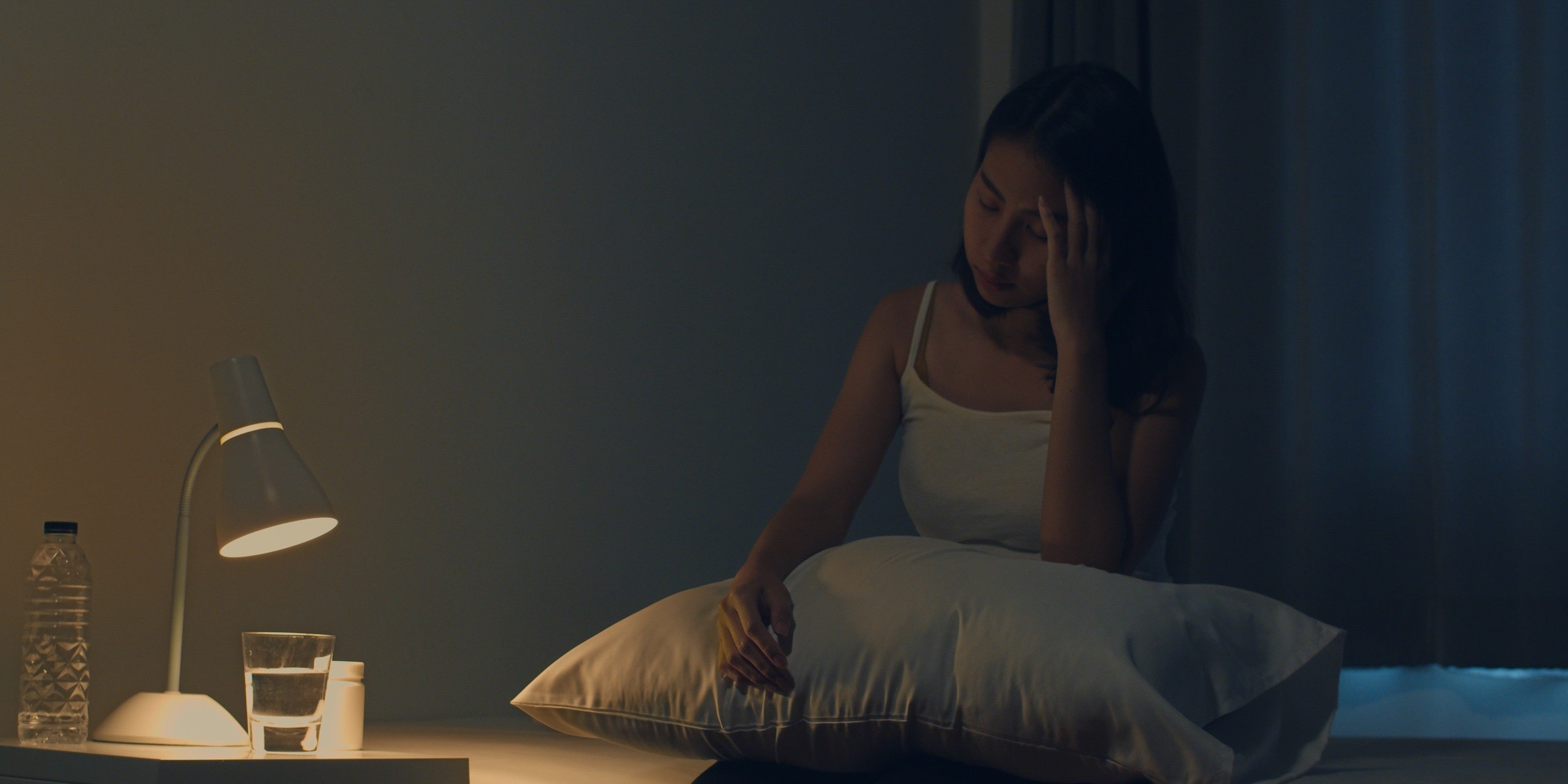Insomnia? Everything you need to know about insomnia.
We all have a bad night now and then. You toss and turn , the hours drag by, and when you finally fall asleep, it's almost morning. In itself, a bad night's sleep isn't a major disaster. But what if this happens night after night? When falling asleep becomes a struggle, sleeping through the night seems impossible, and you're constantly exhausted during the day... Then you quickly realize that this is much more than just a bad night's sleep.
What is insomnia?
According to the DSM-5 ( Diagnostic and Statistical Manual of Mental Disorders), insomnia is defined as a persistent complaint of difficulty falling asleep, difficulty staying asleep, or early awakening. What distinguishes insomnia from temporary sleep problems is the duration and frequency of the symptoms : the symptoms occur at least three times a week for at least three consecutive months. Furthermore, sleep deprivation leads to fatigue, irritability, mood swings, attention deficits, memory problems, and decreased work or school performance.
Sleep Problems vs. Insomnia: An Important Distinction
While it's tempting to label any form of poor sleep as "insomnia," it's important to distinguish between temporary sleep problems and chronic insomnia . Temporary sleep problems can arise from circumstances such as work stress, relationship tensions, pain, or environmental noise. They typically pass relatively quickly and disappear when the underlying cause disappears. Insomnia, on the other hand, persists despite the disappearance of the underlying cause and can even persist autonomously because the fear of not being able to sleep itself creates a vicious cycle of insomnia. People with insomnia often develop negative expectations and behaviors around sleep, leading to hyperarousal , a heightened state of alertness that further prevents sleep.
Causes of insomnia: a biopsychosocial model
Insomnia is a multicausal condition, meaning it rarely has a single cause. The etiology is typically described using Spielman's 3P model : predisposing factors , precipitating factors , and perpetuating factors .
Predisposing factors are innate or long-term characteristics that make someone susceptible to insomnia, such as genetic predisposition, perfectionism or an overactive stress system.
Precipitating factors are events that acutely disrupt sleep patterns , such as death, divorce, burnout, or medical condition.
Once these triggers pass, normal sleep patterns should return, but perpetuating factors such as poor sleep hygiene, poor Feng Shui , worrying in bed, or daytime napping can perpetuate insomnia.
Besides psychological and behavioral factors, there are also important biological determinants. Chronic hyperactivation of the nervous system, elevated cortisol levels, or a disrupted circadian rhythm can form a neurophysiological basis for insomnia. Neuroimaging has shown that in people with insomnia, brain areas associated with wakefulness (such as the thalamus and prefrontal cortex) remain overly active at night . This suggests a disturbed regulation of the central nervous system.

Symptoms and clinical picture
The symptoms of insomnia are both nocturnal and diurnal. "Nocturnal" means active at night, while "diurnal" means active during the day.
In the evening, you experience difficulty falling asleep (taking more than 30 minutes), and you wake up frequently or early during the night without being able to fall asleep again. Sleep is experienced as insufficient or unrefreshing, leading to daytime symptoms ( fatigue, lack of energy, decreased motivation, reduced concentration, mistakes, accidents, or emotional instability ). Cognitive impairments such as memory problems and slower information processing are also often present. Furthermore, research shows that people with chronic insomnia have an increased risk of developing mood disorders such as depression, as well as anxiety disorders, addictions, and cardiovascular disease. Cardiovascular diseases are diseases that affect the heart and blood vessels.
Diagnosis: clinical evaluation and objective measurement
The diagnosis of insomnia is primarily based on an examination , in which the doctor or psychologist maps the patient's sleep pattern, lifestyle, medical history, and psychological state. A sleep diary kept for two weeks provides insight into the timing and quality of sleep. In some cases, actigraphy is used: a small, wearable device that records movements and measures the wake-sleep pattern. If other sleep disorders, such as obstructive sleep apnea or periodic limb movements , are suspected, a comprehensive polysomnography (sleep study) in a sleep laboratory may be indicated. It is important to exclude other causes of fatigue, such as hypothyroidism (too little thyroid hormone), or anemia , can also be ruled out.
Treatment: From Cognitive Behavioral Therapy to Natural Supplements
The first-line treatment for chronic insomnia is cognitive behavioral therapy for insomnia (CBT-i). This therapy combines education about sleep mechanisms with behavioral techniques such as stimulus control ( re-associating bed with sleep and not with wakefulness-related activities such as watching television, eating, or worrying ) and sleep deprivation (limiting time in bed to the actual number of hours slept). In addition, attention is paid to irrational thoughts such as "I have to sleep eight hours or I won't function" and anxiety-provoking thoughts related to being awake. CBT-i is considered more effective than sleep medication in the long term and has a lasting positive effect in the majority of patients.
Pharmacological interventions are primarily intended for temporary use or as supportive measures. Medication is occasionally prescribed, but its use is controversial due to the risk of tolerance, dependence, and rebound insomnia . Alternatives such as melatonin or antihistamines have a milder effect and are sometimes used in older patients or for insomnia caused by jet lag or shift work.
Clinical studies show that natural supplements have beneficial and long-lasting effects in people with mild to moderate insomnia, especially when combined with other measures and stress reduction techniques such as breathing exercises or mindfulness.
Epidemiology and societal impact
Insomnia is a global health problem with an estimated prevalence of 10 to 15 percent in the general population. Among older adults, this figure rises to over 25 percent , partly due to biological changes in sleep architecture and increasing comorbidities. Women are twice as likely to develop insomnia as men, likely due to hormonal fluctuations and an increased incidence of affective disorders. The societal impact is significant: insomnia leads to increased absenteeism, lower labor force participation, an increased risk of occupational accidents, and higher healthcare costs .



